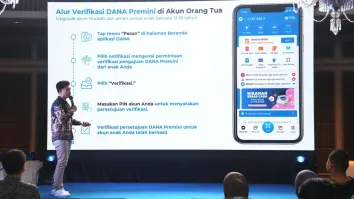
Asian banks face consolidation as fintechs, neobanks usurp market
Banks’ hopes for survival lie in the US$100b of new revenue opportunities, reports McKinsey & Co.
Asia’s emerging markets have become a major engine of growth in global banking. More than 40 of the world’s 100 largest banks by assets are Asian and account for approximately 50% of the market capitalization of the top 100 banks globally. Asia has been the world’s largest regional banking market for a decade, generating pre-tax profits in excess of US$700b and accounting for 37% of global banking profit pools in 2018.
McKinsey estimates that as incomes continue to rise and the middle class grows to include two-thirds of Asian households, personal financial assets in the region will total US$69t by 2025, representing approximately three-quarters of the global total. Not only have Asian banks caught up and begun to surpass their Western peers in scale, but consumers’ tech-savviness has created opportunities for banks to deliver new innovations and leap ahead. Asia’s best-known financial technology (fintech) innovators, including Alipay and WeChat Pay, lead the world in scaling digital payments. According to McKinsey’s Global Payments Map, digital payments in China account for approximately 99% of the country’s non-cash transaction volume and 45% of digital payments worldwide.
Across Asia, incumbent banks are partnering with fintech startups to promote digital payments. In Thailand, Kasikornbank and Grab have teamed up to launch GrabPay by KBank, a mobile wallet. BRI (Bank Rakyat Indonesia) has partnered with Alipay to expand point-of-sale acceptance of mobile payments for Chinese tourists visiting Indonesia.
Asia has also proven to be fertile ground for the development of digital banking, with numerous companies making the transition from technology platform to digital bank. In China, Tencent’s WeChat offers loans through WeBank; in South Korea, Kakao Talk launched a bank—Kakao Bank—in 2017; and the Japanese e-commerce group Rakuten has expanded into credit cards, digital banking, investments, and insurance. Not to be outdone by fintech disruptors, traditional banks have launched stand-alone digital banks, (e.g., The State Bank of India’s YONO, BTPN’s Jenius in Indonesia, and DBS digibank in India and Indonesia) as a way to reach new markets and to acquire new customers at lower cost.
The rise of ecosystems as a new way of organizing economic activity is another area where Asia is leading. For example, a diversified ecosystem for trade, including banking and payments, has emerged from Alibaba’s platforms for B2B and B2C commerce. Ping An, one of China’s largest financial conglomerates, has reinvented itself as a “tech + fin” ecosystem company, providing loans and investments, as well as insurance, across platforms for healthcare, housing, and more. Banks in diverse markets are also building digital platforms as a way to integrate financial services into the everyday activities of consumers and small and medium-size enterprises (SMEs), e.g., HDFC Bank has broadened services for small farmers in India; DBS Marketplace enables consumers to search for cars, auto loans, and more in Singapore.
Asian banking braces for consolidation
For most of the past decade, Asia banking has been the darling of the world, but this is no longer the case.
Banking industry revenue growth in Asia has slowed from double digits in the early years of the decade to 5% per annum for the period from 2014-2018. And whilst Asia today accounts for more than a third of global banking profit pools, this has shrunk from nearly half in 2010, as banks in developed markets have recovered from the Global Financial Crisis.
Margins are also thinning, as banks in both emerging and developed markets contend with fierce competition from digital attackers and peer banks. Average banking ROE for Asia decreased from 12.4% in 2010 to 10.1% in 2018. In emerging markets, rising capital costs and declining asset quality have also taken their bite out of returns, pushing the average ROE down from 19.5 in 2010 to 11.4% in 2018, converging with the global average. Investors have shown strong support for the region’s fintech and big tech disruptors, but their outlook for Asia’s traditional banks is, on balance, pessimistic, pushing P/B ratios for Asia banking down from 1.4 in 2010 to 0.7 in 2018—trailing the global average of 0.9.
If, as forecasts suggest, GDP growth continues to lose steam across emerging Asia, banks will be challenged to find new avenues of growth and will likely have to deal with deteriorating asset quality and rising risk cost.
Already in 2018, risk cost provisions for Asia rose to approximately 0.3%, the highest level of loan losses for the region since 2002. Slower GDP growth in China—compounded by ongoing trade friction with the US and the rapid increase in real estate prices relative to household income—could weigh heavily on the country’s trading partners, as the effect of a correction could potentially destabilize banks in neighboring markets.
In addition to these headwinds, open banking is taking hold, with diverse markets moving toward broader participation in the banking system. India, for example, allows non-bank service providers direct access to the United Payments Interface; Hong Kong and Singapore have recently introduced new procedures for licensing digitalonly banks. Australia and Singapore—among others—have adopted open banking rules requiring banks to allow qualified third-party service providers to link to banking systems to access account information and initiate transactions on behalf of customers. McKinsey expects that as regulators consider ways to promote lower costs and better products for consumers, as well as improved system efficiencies and controls, open banking will likely become the norm in most Asian markets.
Most banks, however, will be challenged to increase their returns adequately to win investors over and execute the transformation required to remain competitive. Well-capitalized institutions generating market-leading returns will likely seek to cement their advantage by acquiring smaller (less-well-capitalized) organizations to increase scale inorganically. Weighing these dynamics, Asia’s banks are bracing for consolidation.
Reinventing the Future
Just as iron sharpens iron, we believe that the region’s banking industry will emerge stronger and leaner than ever. But to remain relevant each bank must reinvent and must balance short-term goals—in particular strengthening the core and capturing pockets of growth—with priorities for the long term. The latter includes articulating anew the bank’s purpose for the digital age, redefining its value proposition, and rebuilding the operating model, amongst others.
Increasingly, banks will both acquire new customers and interact with ongoing customers through digital ecosystems, requiring new approaches to branding and relationship management as well as changes in business model and technology architecture. Organizations that generate returns below the average cost of capital—approximately twothirds of Asian banks—will face an existential choice: Either reinvent to stay relevant or lag behind and eventually disappear.
Asia’s banking leaders have already taken decisive steps to strengthen the core, focusing on productivity, risk, and capital optimization. Many have reduced operating costs by 30-40 % across sales and service, support functions, and back-office operations through extensive digitization. The full potential of this opportunity lies in adopting zero-based budgeting to transform mindsets and redesign processes to achieve radical gains in productivity.
For risk management, banks are finding that they can reduce loan losses whilst allowing a broader population to qualify for loans by developing machine learning algorithms to analyze a combination of traditional underwriting data and unstructured data from internal and external sources. Capital allocation is another area where banks can leverage new strengths in data analytics to reduce waste. For example, some banks are able to allocate capital consumption to the level of products and individual accounts, which in turn leads to highly accurate risk weightings at the portfolio level. As a result, these banks have been able to free up between 10 and 20% of capital.
To achieve such radical improvements in performance, banks must leverage all the new tools, technologies, and capabilities available today, including digitization, advanced data analytics, robotics, and AI. Banks can deploy these same capabilities in pursuit of strategic growth, focusing on four fast-growing businesses: wealth management, consumer and SME lending, and transaction banking. Together, these businesses hold the potential for US$100b in new revenue for Asia’s banks each year.
In wealth management, the key is to strike the right balance between self-guided digital tools and high-touch consultation. Within high- and ultra-high-net-worth segments, this means delivering portfolio offerings tailored to individual client needs. Use of voice recognition and AI can support a high degree of personalization at scale for the mass affluent segment.
Consumer and SME lending are also poised for strong growth. Retail lending in Asia, which totaled US$12.8t in 2018, is on track to reach US$21.2t in 2025. The loan book for SMEs—already bigger than retail and corporate lending—is expected to grow 9% each year, totaling US$23t in 2025.
Banks can use this strong growth as a foundation for developing new value propositions and multiplying revenue streams. In the consumer lending market, regulators in several countries are wary of mounting consumer debt levels, and banks should use sophisticated risk models to identify the most qualified customers within segments where product penetration is low relative to GDP. Similarly, by combining traditional and non-traditional data, leading banks and fintech attackers have built risk-scoring engines to speed up loan approvals for SME customers, even those with limited or no credit history. One example is HDFC’s “Milk-to- Money” program in India, which tracks regular ATM deposits to establish a credit profile for dairy farmers, many of whom have only recently opened bank accounts.
Finally, transaction banking, which already accounts for approximately a third of all banking revenues in Asia and captures more than half of transaction banking revenues globally, holds significant potential for further growth. Banks can potentially increase transaction banking revenue by 10-20% across four main business lines: cash management, trade services, securities, and cross-border flows. Competition is fierce and margins are thin, making it crucial for banks to combine scale with sophisticated analytics capabilities to eliminate waste, create new products, and deepen relationships. In response, leading banks are using APIs to integrate banking functions more deeply within corporate systems, enabling them to provide a dashboard view, for example, of intraday cash position across multiple currencies, investments, working capital, and payables. What is more, advanced data analytical models are helping banks enhance their liquidity management services, optimize netting arrangements for on-us transactions, and implement dynamic pricing.
Flexible technology architecture
To compete with big tech companies on speed, productivity, and customer experience requires modular platforms, which allow developers continuous integration and interoperability with core systems. Whilst core systems may be transformed gradually, the modular applications or microservices supporting specific use cases can be updated frequently as the market changes and new innovations become available.
Beyond architectural and system changes, banks should also learn to adopt new ways of working. This requires not only flexibility in acquiring, upskilling, and integrating new talent profiles, but also shifting to a new operating model and culture in which business and technology competencies are more closely intertwined.
Advanced data analytics
Advanced data analytics form the cornerstone of superior customer experience, and many banks now focus on data as a core enterprise asset. This entails the articulation of an enterprise-wide data strategy and investment roadmap so that dataand-analytics projects can be tightly linked to value creation.
Banks should focus first on advanced analytics use cases with the greatest impact on customer experience and value to the bank. Commonwealth Bank of Australia (CBA), for example, has built a customer engagement engine that analyzes more than 30 billion data points to generate upwards of 40 million offers each month.
Developing a top-notch data-and-analytics program requires vision and commitment, and to earn a good return on the investment, it is crucial to give employees the tools and skills they need to formulate their own data queries for strategic planning and day-today management of strategic goals.This requires a combination of strong governance and autonomy to enable individuals across the entire organization—from sales and service to risk management and digital innovation—to excel in a data-driven environment.
Talent management
With automation expected to disrupt up to 40% of all banking activity and affecting half of banking jobs by 2030, banks are today evaluating how to combine recruiting, reskilling, and redeployment to build the workforce of the future. Malaysia’s Maybank has launched a learning program to help employees acquire relevant skills for the next phase of their careers, with sessions on coding, algorithm programming, artificial intelligence, and machine learning.
Aiming to enhance their appeal to millennials with superior digital skills, many banks are building a reputation for leadership in technological innovation, forging ties with fintech and academic communities, and developing a culture where talented and ambitious employees know they can make a difference. It is critical to understand the shifts required in the bank’s composite talent profile, and to succeed in this transition, top leaders must commit not only to recruiting new talent but also to helping existing employees acquire the skills needed to thrive in the new culture.
Partnerships and M&As
In this age of open banking and digital ecosystems, many banks are finding that partnerships are critical to success in extending their footprint, delivering superior products, and gaining access both to new customers and to new types of data.
As an example, three of Australia’s big four banks—ANZ, NAB, and Westpac—have invested in Data Republic, a data hub through which organizations can store, exchange, and collaborate on aggregated data projects in a secure environment. In Thailand, Siam Commercial Bank and Julius Baer have partnered to deliver global investment opportunities to customers. In Indonesia, Bank Central Asia (BCA) has linked with leading e-commerce sites, enabling the bank to expand its lending business whilst keeping risk costs low. And in Singapore, OCBC offers home mortgages through the personal finance portal MoneySmart.
Mergers and acquisitions (M&A) are another way to acquire crucial capabilities and extend market reach. DBS, for example, has acquired ANZ operations in five countries. Kotak Bank has extended its footprint into southern India by acquiring ING Vysya and entered the lower end of the market with its acquisition of BSS Microfinance. Given the importance of scale in achieving higher returns carefully executed mergers and acquisitions offer an attractive option for increasing market share and consolidating scale, capabilities, and talent. Now is the time for banks to establish a dedicated group responsible for planning and managing M&A, as well as partnerships.
Banks should remember that 90% of the value of a merger is realized within the first two years and establish early on a plan for post-merger integration to ensure that synergies are realized promptly.
From McKinsey & Co. 2020 report “Future of Asia: Banking”



















 Advertise
Advertise







